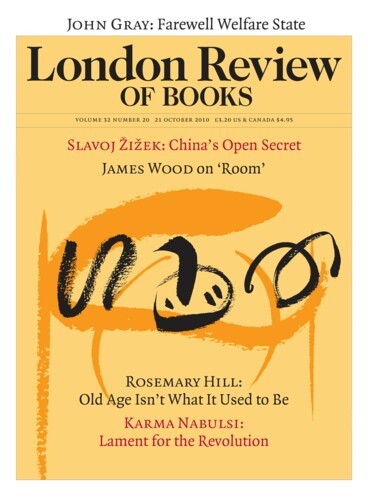i.
One reason why we stay in Mergellina
in our favourite city Napoli ’s to eat
fresh shellfish with volcanic Falanghina
at Pasqualino’s outside in the street
in the Piazza Sannazaro, a small square
named for the poet I’m inviting you to meet.
Two greater poets’ tombs are close to there,
Virgil and Leopardi, whose verse nurtured mine
but ignore for now that more illustrious pair,
and make a pilgrimage before you dine
to a poet of some significance though far less great,
to Jacopo Sannazaro in his shrine.
Sannazaro’s eclogues celebrate
not shepherds, fishermen all Mergellina bred,
netting shellfish like these cozze on our plate.
Pastoral moved from meadows to the Med
with Mergellina men who still today
fetch the succulent squid on which we’ve fed
from Cumae up the coast 10 miles away,
ruins that made Sannazaro write
how a once great sacred place has had its day.
Tales of transience can help the appetite
and you’ll have something to recall him by
so I’ll translate his Cumae poem which I’ll recite:
Here where Cumae’s famous walls reached high,
the foremost glory of the Tyrrhenian sea,
packed ships came to hear the Sybil prophesy
and learn from Apollo what their fates would be.
Those crowds who came to Cumae long before,
when Cumae wasn’t rubble and debris,
all saw the wings that Daedalus once wore.
Once the highlight of the coastal cruise
Cumae’s tourist marvels are no more.
Dense vegetation shrouds the famous views
and where walls once echoed with the Sybil’s moan
the shepherd pens his precinct-plumped fat ewes.
The crumbled Assembly with its broken stone,
once full of elder statesmen in debate,
the birds and snakes have long since made their own.
Ancestral statues shared the same sad fate,
those likenesses of wax that once stood tall
brought down by their own imposing weight.
Even the sculpted gods were doomed to fall
prostrated like their worshippers of yore
and everywhere the grass grows over all.
Where ceilings now lie level with the floor
and not one single dwelling’s occupied,
weekenders bag their quota of wild boar.
But that wasn’t what Apollo prophesied.
We moan how rapidly life runs away
when violent death sweeps towns like this aside.
May it prove false what I’m about to say
and brand liar rightly on the poet’s brow
when he predicts Rome too will die one day.
The ploughman striking sparks with his shoved plough
says: ‘See that rubble? Them heaps used to be
Napoli, once famous but not now.’
Fate drags off cities, men, among them me,
and, reader, you, and everything you see.
ii.
So first read this poem then, before you dine
on piscatorial plenty, go and find
fish-eclogue Sannazaro in his shrine.
It’s in Santa Maria del Parto he’s enshrined.
Look at his bust’s grave features and then gaze
at the painting depicting Pegasus behind,
with a muse about to crown our bard with bays
but, I hope that you’ll be able to endorse
the image which for me ’s the one that stays,
the spring of Hippocrene, inspiration’s source,
(I quaff from Castalia’s fountain though!)
spouting from the hoofprint of the horse,
not on Helicon which we hail from below
passing by most years when Delphi bound,
not Helicon, no, look: Vesuvio!
Vesuvio the Muses’ favoured ground
for Sannazaro here in Mergellina
who, despite the fear of it erupting, found
in this volcanic Hippocrene a
scalding cupful poets must learn to quaff,
best followed by another Falanghina!
Well, that’s one bottle that we’ve polished off!
iii.
Before it erupted in AD79
a fresco shows Vesuvio much greener,
the volcano verdant with the lushest vine
lava ruina scorched that could have been a
forebear of the wine we’ve drunk today,
the disaster-nourished, well-chilled Falanghina.
It’s from a fresco dug from doomed Pompeii
painted long before it met its doom
though now the vines have mostly given way
to Leopardi’s La ginestra (Broom)
whose upright pliant plant seems to defy
Pompeii’s wrecker with proud yellow plume,
burning brightly, holding its head high,
bowing to nothing human or divine.
Leopardi lauds it, so do I.
You’ll find in Sannazaro’s Elegia IX,
the one about Cumae, on verse 18, a
word I feel’s dissolved into our wine
and Leopardi also uses, that’s ruina
in La ginestra on line 32,
the very flavour of our Falanghina,
drunk at Pasqualino’s in this toast with you:
to broom in the ruina of our age
burning brightly as both of us should do,
me in the poetry, you when you’re on stage,
maybe in one of my works, Albee’s … Tennessee’s …
Our clinking glasses spill wine on this page!
Prego, prego, prego! Next door’s maître d’s
propositioning passers-by to dine inside
and like terza rimapregos come in threes.
Terza rima was the metre I first tried
translating a Latin poem from the year
MDXXX when Sannazaro died
aged 72, the same age I am here
fiddling with metre, determined not to die
till my terza rima flows a little freer.
I gave terza rima my first feeble try
translating Fracastoro’s Syphilis.
Now almost half a century’s gone by
and I’ve gone back to it, I think, for this:
to find ruina’s rhyming link to Falanghina –
well, that’s the half-pissed poet’s hypothesis:
Sannazaro, Leopardi use ruina
one in Cumae Elegia IX
one in La ginestra, both to mean a
destruction by a power that’s not divine
a darkness intertwined with all our light
as when we drink ruina’s rhyming wine.
So, with Falanghina, love, let’s raise tonight a
toast to the lowering lava of Vesuvio,
that makes Leopardi’s broom burn even brighter,
and you’re sipping and I’m quaffing wine below
listening to mortality’s prego, prego, prego …
Send Letters To:
The Editor
London Review of Books,
28 Little Russell Street
London, WC1A 2HN
letters@lrb.co.uk
Please include name, address, and a telephone number.

